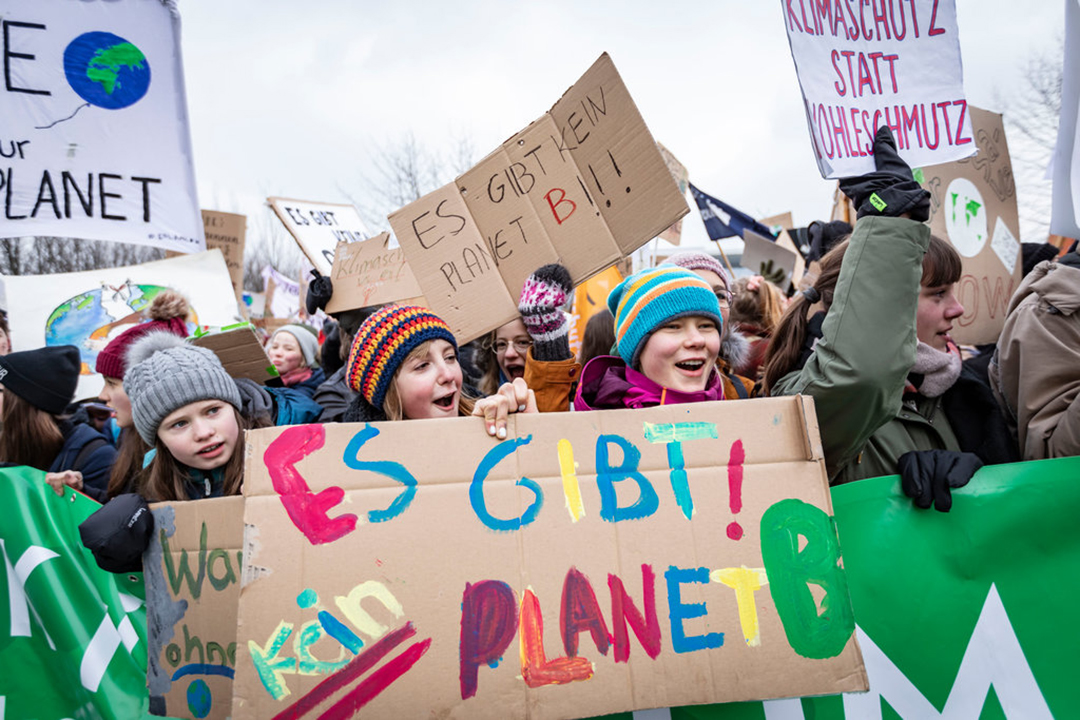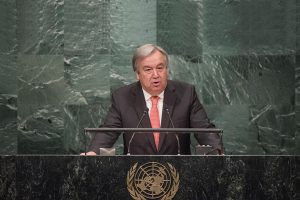By Kalterina Shulla, University of Bonn/RCE Middle Albania, and Bernd-Friedrich Voigt, South Westphalia University of Applied Science, Germany
The 2030 Agenda for Sustainable Development has formed a community of young science diplomats around the world. While it is difficult to draw a clear line on what counts as science diplomacy, the massive engagement of young communities for the SDGs during the seven years of their implementation may have empowered them to act as such.
Following the statement that for the SDGs every contribution is valid, global efforts towards their implementation are inclusive. Complex and difficult to reach by organizations, the SDGs appeared to be absorbed easier by the young generation, encouraging a sense of responsibility and commitment from young people around the world. Through several initiatives and funds for the SDGs, youth are engaged in a myriad of ways, including awareness raising, data collection and use, grassroots and national initiatives, monitoring and accountability efforts, and shadow reporting on progress.
Scientific international cooperation on the 2030 Agenda specifically involves the young generation, providing international events, platforms, and global arenas for the SDGs. The SDGs and sustainability challenges they represent are incorporated in art, games, and other media, finding a way to creativity, energy, and initiative of youth during yearly SDG action campaigns. The SDGs framework has in a way become a tool for inter-cooperation between youth communities around the globe, through different forms of engagement and programs, outside curricula, enforcing a sense of commitment to being part of the solution.
The crises of the recent years have tempered expectations for the achievement of the SDGs by 2030. Since 2015, the 2030 Agenda has only had limited political impact on global national and local governance, challenging a common aspiration among scholars and policy experts that it could underpin the “orchestration” of global sustainability policy, or even global social, environmental, and economic policy.
The Pact for the Future, to be adopted during the Summit of the Future (SoF), set for September 2024, is a significant milestone in global cooperation that can contribute to this direction, aiming to highlight the urgent need for a unified approach to addressing the world’s most pressing challenges, including acceleration of the SDGs. This is a unique opportunity to accelerate the implementation of the 2030 Agenda at a time of contestation and challenges multilateralism faces.
Youth and future generations have a dedicated chapter (Chapter 4) in the Pact for the Future, which is structured around five chapters – Chapter 1: Sustainable development and financing for development (FfD), Chapter 2: International peace and security, Chapter 3: Science, technology, and innovation (STI) and digital cooperation, and Chapter 5: Transforming global governance, dedicated to reform of the principal organs of the UN, including the Security Council, reform of the international financial architecture, and identifying and addressing complex global shocks.
The Pact for the Future gives a role to young generations, considering and inviting them as stakeholders. This is a crucial opportunity, which can elevate the role of youth as science ambassadors for sustainability and serve as a driver to embrace the under-represented science diplomacy field in academia. Global sustainability challenges and particularly the SDGs have to be more present in the majority of the teaching modules in order to impart the necessary background knowledge for the young generation and encourage their contribution to solving societal challenges.
The Summit of the Future can build on the cumulative contributions of the young generation towards the 2030 Agenda and on the actual worldwide engagement of youth communities around the SDGs, underscoring the critical role of young people and the necessity of empowering them through education, inclusive policymaking, and leadership, allowing them to be self-represented as stakeholders.
The Summit of the Future represents a unique opportunity to mobilize this engagement in a different setting, because it aims to represent the interests of young people and future generations among a broad spectrum of stakeholders, including UN agencies, Member States, civil society, and the private sector. It aims to promote intergenerational equity and inclusivity, incorporating the voices and concerns of young people and future generations into national and global decision-making processes. Its goal is to embrace global cooperation and strengthen international collaboration and partnership, recognizing that the challenges of our time transcend borders and demand a concerted, unified response by working with and for young people.
During the consultations for the Declaration on Future Generations, which, if adopted, will form part of the outcome of the Summit of the Future, along with the Pact for the Future and the Global Digital Compact, stakeholders from youth and Indigenous groups called for prioritizing meaningful youth participation in the process. Additionally, a dedicated Youth Hub for the Summit was created to share important updates and engagement opportunities for young people globally. The report titled, ‘Voices of Youth: Young People’s Perspectives on the 2024 Summit of the Future & the Acceleration of the 2030 Agenda,’ consolidates inputs from young people and emphasizes integrating the 2030 Agenda and the Pact for the Future by amplifying youth engagement.
Will these involvements go beyond contributions in closed circles and be supported by mechanisms and resources for real influence?
There are high expectations that through Chapter 4 on youth and future generations, the Pact for the Future, with the Declaration on Future Generations, will accelerate and elevate the engagement of the young generation for the 2030 Agenda and the 17 SDGs by recognizing a space for young sustainability science diplomacy actors to help address global challenges.

